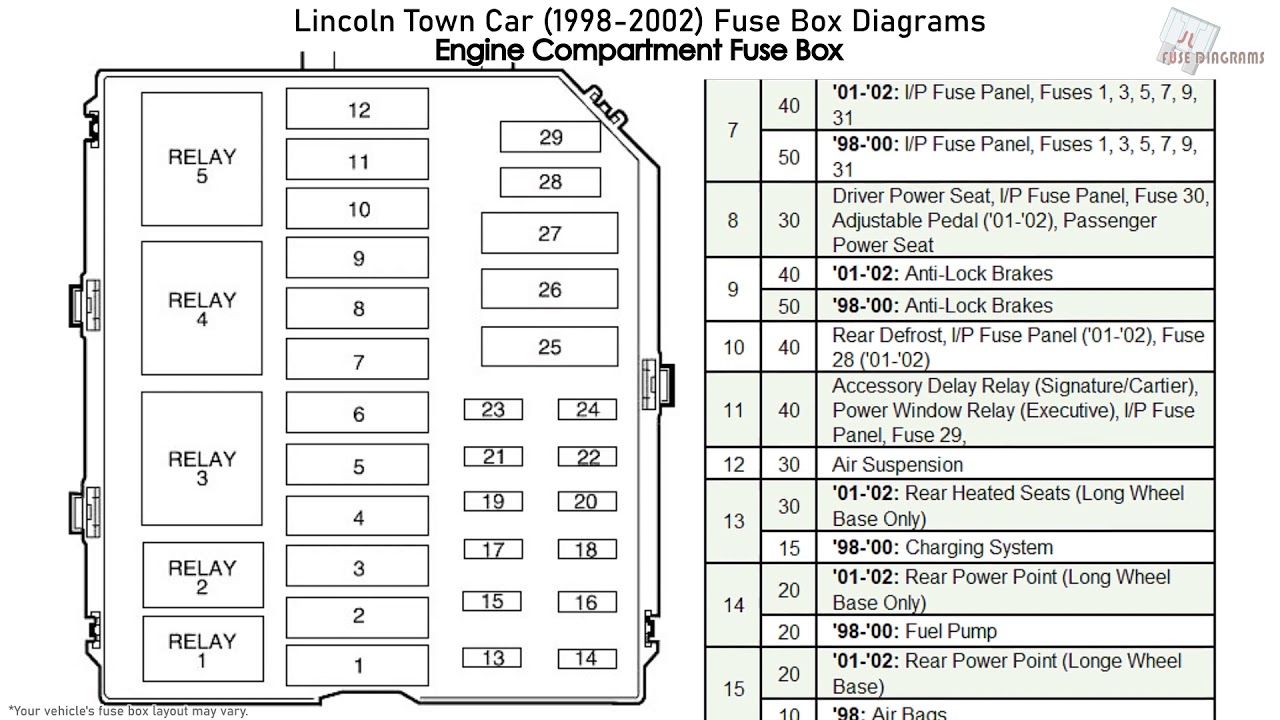Locate two primary fuse panels in your 1999 Lincoln Town Car. The primary power distribution panel resides under the hood on the driver's side. The secondary interior fuse panel sits within the passenger compartment, at the driver's end of the instrument panel behind the trim panel accessible when the driver's door is open.
Understanding the Fuse Box Diagram
Identify your specific fuse box using the provided legend. Diagrams are printed directly onto the panel covers. Locate your vehicle's trim level (Base, Executive, Cartier, Signature Touring) as fuse locations vary slightly. Match symbols and fuse numbers accurately.
Key Fuses and Circuits (Typical Examples)
- Fuse 1 (25A-30A): Controls power windows and sunroof motors.
- Fuse 2 (15A): Powers the Daytime Running Lamps module and interior lamps.
- Fuse 3 (30A): Manages the windshield wiper motor functionality.
- Fuse 4 (15A): Supplies power to the instrument cluster lighting and warning indicators.
- Fuse 5 (20A): Protects circuits for the radio, CD changer, and factory navigation components.
- Fuse 6 (30A): Responsible for blower motor operation controlling HVAC airflow.
- Fuse 7 (15A): Operates the turn signals, hazard flashers, brake lights, and horn circuit.
Diagnosing Issues
Suspect a blown fuse if specific functions fail. Inspect the fuse visually: the wire element inside should be intact. A broken or melted element indicates failure. Use the diagram to match the failed function to its designated fuse number. Verify fuse amperage using the numbers stamped on top of the fuse.

Replacing Fuses Correctly
- Turn Off Equipment: Shut down all affected accessories.
- Use Correct Fuse: Replace only with fuses matching the original rating (e.g., 10A, 15A, 20A). Never install a higher amperage fuse.
- Check Fit: Firmly seat the fuse into its designated slot. Poor contact causes intermittent failures.
- Investigate Cause: A blown fuse often signals an underlying electrical fault. Recurring failure requires professional diagnosis of the related circuit.
Critical Safety Precautions
Always disconnect the vehicle's battery negative terminal before accessing the under-hood fuse panel or performing electrical work. Replace fuses only with the exact amperage specified. Using metal objects like foil bypasses protection, posing a fire hazard. Consult your specific fuse panel diagram for authority.

